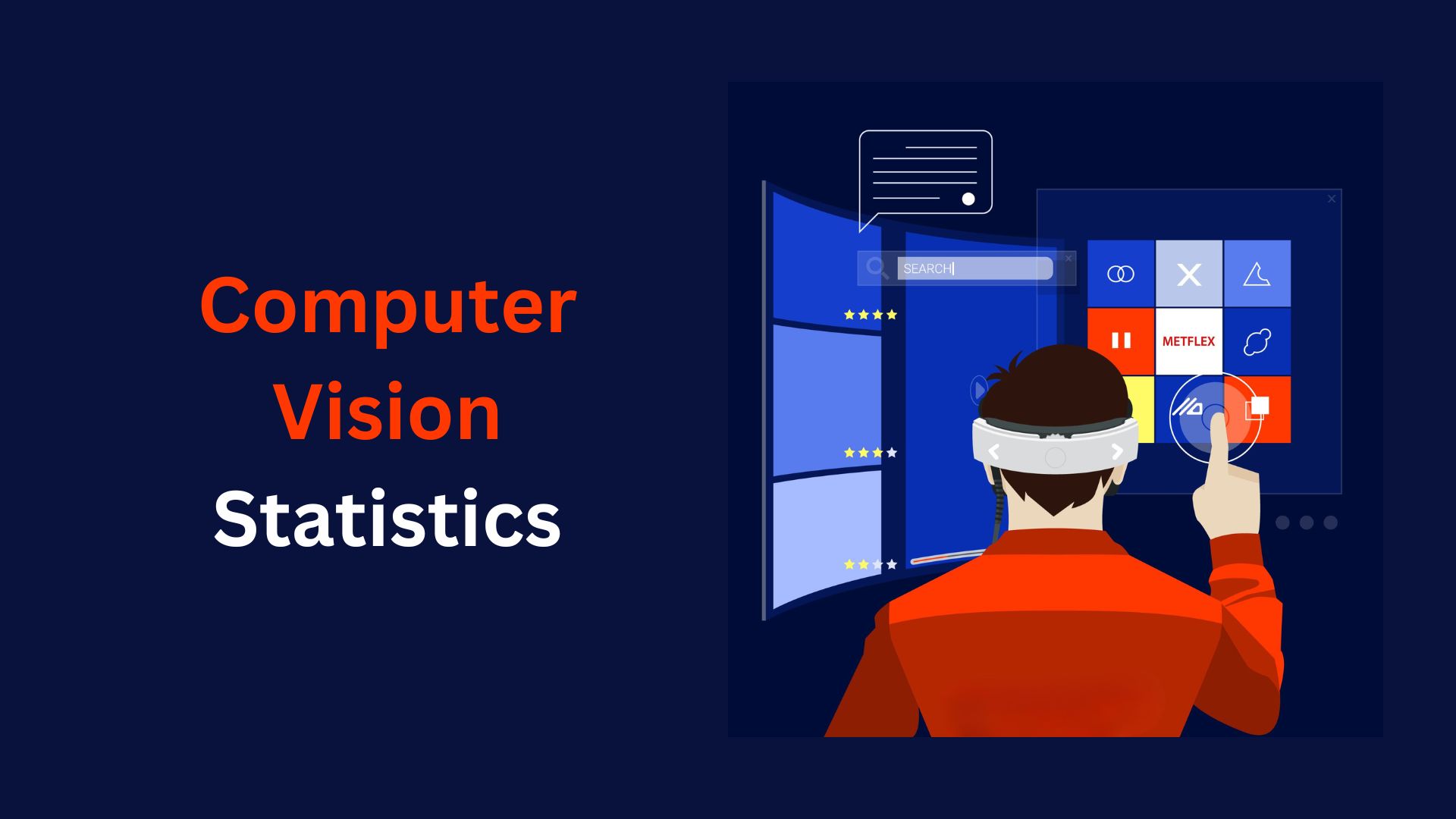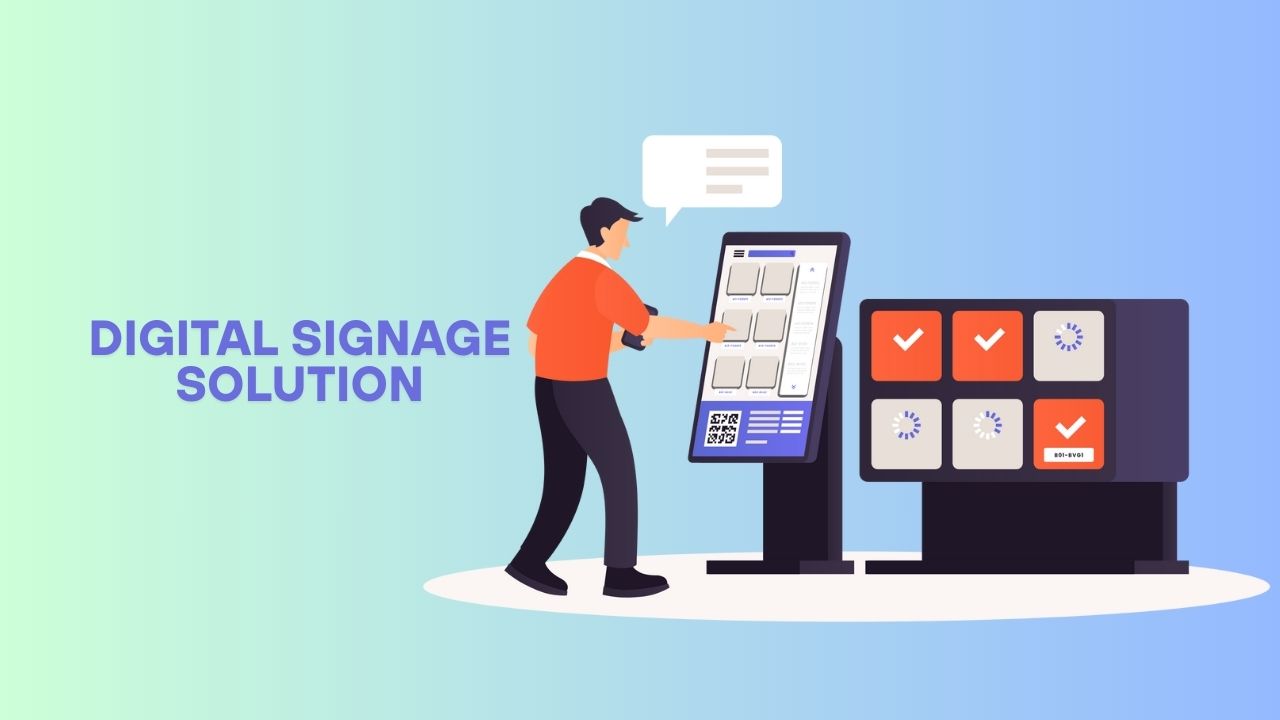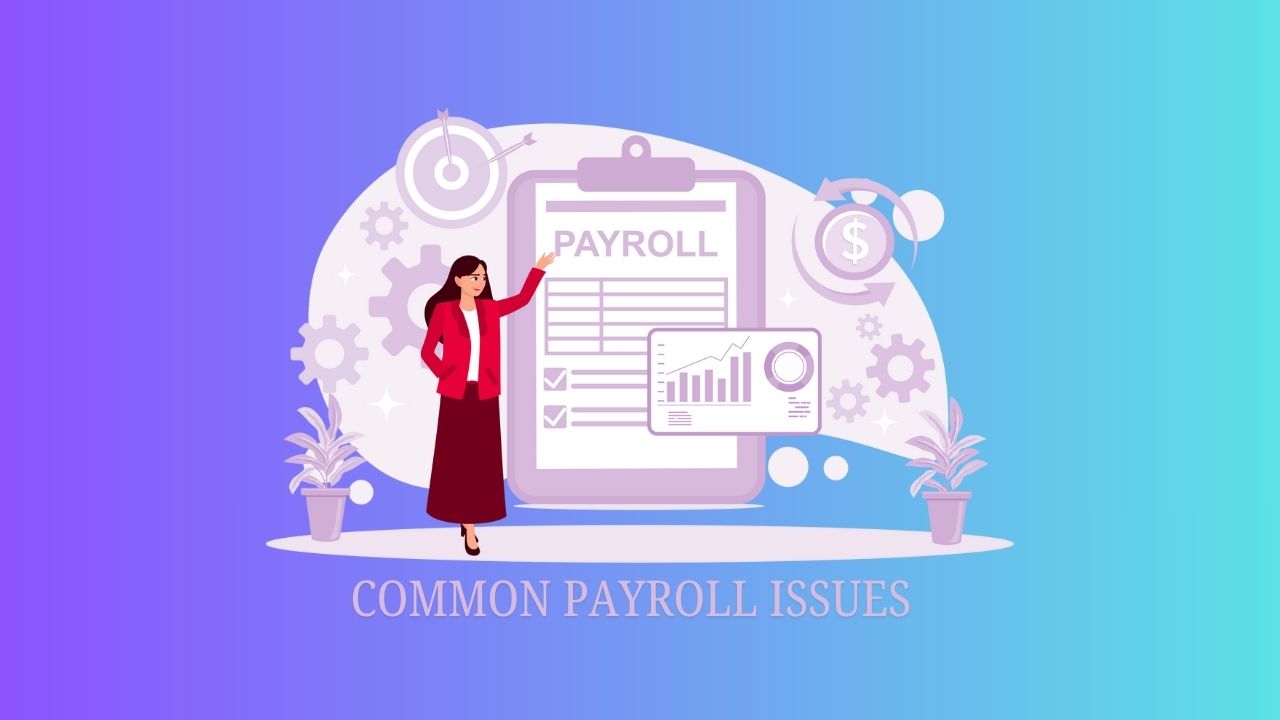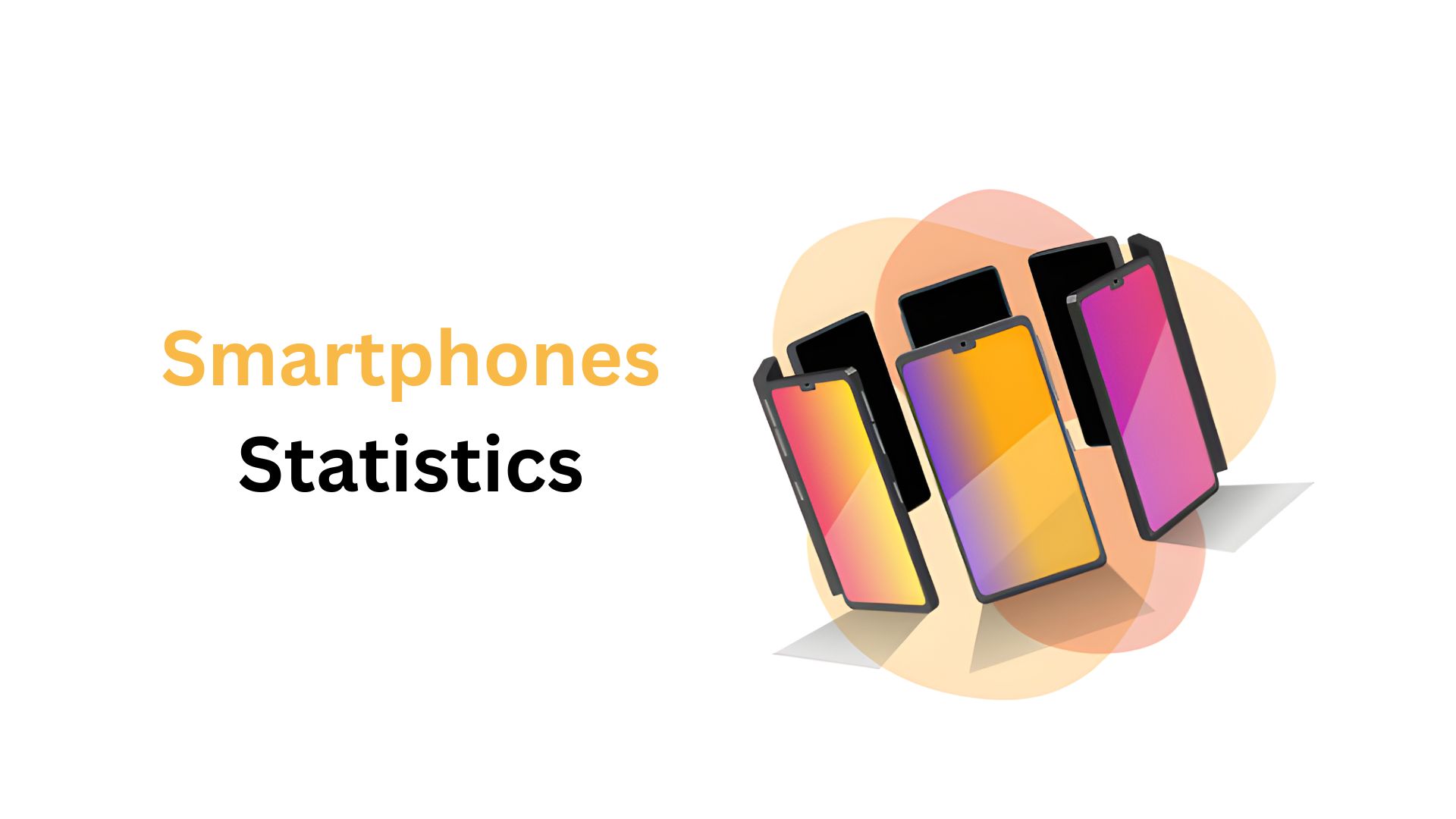Google Classroom Statistics And Facts (2025)
Updated · Nov 20, 2025

Table of Contents
- Introduction
- Editor’s Choice
- Leading Education Apps On Android By Downloads
- Top Competitors Of Google Classroom
- Google Classroom Market Share
- Google Classroom Customers By Product and Services
- Google Classroom Customers By Geography
- Leading Educational App Download On The Apple App Store
- Google Classroom Challenges And Criticism
- Conclusion
Introduction
Google Classroom Statistics: Google Classroom is a free blended learning platform developed by Google to streamline the process of creating, distributing, and grading assignments. Since its launch in 2014, it has become a widely adopted tool in educational institutions worldwide. By the first half of 2024, Google Classroom had approximately 10 million daily active users on Android. This growth is attributed to its integration with Chromebooks and its role in facilitating remote learning during the COVID-19 pandemic.
In the United States, the platform is prevalent in K–12 schools, with an estimated 60,000 schools utilizing it as of 2022. Globally, Google Classroom is used in over 230 countries and territories, supporting millions of teachers and students in managing coursework and communication. The article explores market share, customers, and major developments concerning Google Classroom statistics in the year 2024.
Editor’s Choice
- Global usage of this platform in education has shot up since 2024, with Google Classroom having Android downloads of 27.98 million and iOS of 13.75 million.
- Duolingo topped this list of educational app downloads after earning 147 million for Android and 50 million for iOS.
- Approximately 29,161 organizations use Google Classroom, consisting of 9.36% global LMS market share and listed as number two for learning management systems.
- LinkedIn Learning commands the LMS market with 32,473 domains and 10.42% market share.
- The educational services sector is also another category where Google Classroom is extensively used; with 707 general education organisations, 474 K-12 organizations, 382 external programs, 378 special education programs, 339 sports services, 318 professional development centres, and 308 curriculum development organisations.
Leading Education Apps On Android By Downloads

(Reference: statista.com)
- By 2024, Duolingo continued its dominance as the most downloaded app on Android with over 147 million downloads worldwide.
- Following it was Samsung Global Goals, with about 88 million downloads during the same period. Choose your third pick from Seekho: Short Learning Videos with about 39 million downloads worldwide.
- Google Classroom stands fitfully, yet still very much worth its presence, with 27.98 million downloads occurring in that interval.
Top Competitors Of Google Classroom
| Technology | Domains |
Market Share (Est.)
|
| LinkedIn Learning | 32,473 | 10.42% |
| Uteach | 25,424 | 8.16% |
| Moodle | 24,829 | 7.97% |
| Teachable | 15,072 | 4.84% |
| TalentLMS | 11,041 | 3.54% |
| Thinkific | 8,922 | 2.86% |
(Source: 6sense.com)
- This research about Google Classroom statistics given by 6sense offers a comparative study of the major LMS products in 2024, in regard to the number of domains (organizations) using the platform and their estimated market share.
- LinkedIn Learning holds the top spot in the LMS space, having 32,473 domains using the platform and giving it a market share of 10.42%. This shows how broadly it permeates, mostly through professional development and corporate training.
- Uteach is next, with 25,424 domains under its domain and an 8.16% share of the market: its appeal is large for individual educators and online course creators.
- Moodle, an open-source LMS favoured mostly by academic institutions, serves 24,829 domains with a 7.97% share. Teachable(various) is used by 15,072 domains with a 4.84% market share, while TalentLMS supports 11,041 domains with a 3.54% market share; Thinkific has 8,922 domains with a 2.86% share.
- Instructure, the Canvas LMS provider, has 8,282 domains for a 2.66% market share.
- And the 7,757 domains with their 2.49 % share end in the name of Udemy, the giant of the MOOC marketplace.
- With 7,701 domains and a 2.47 % share, Cornerstone OnDemand accounts for the last one, being mostly used in corporate settings.
- According to 6sense data, the Google Classroom statistics show that in 2024, it is estimated that Google Classroom serves 29,161 active customers. The customers largely constitute educational institutions such as schools, colleges, universities, and related organisations.
- The number reflects organisations that use Google Classroom as their primary LMS rather than being those of individual users. This puts the share of the global LMS market for Google Classroom in the range of 9.36%, making it the second most widely used platform in its class behind its leading competitor.
- Nearly one-tenth of the market signals its strong influence and reach in digital education, especially when a greater number of platforms exist. Ranking at #2 in the LMS category means that, in consideration of platforms such as Moodle, Canvas, and Blackboard, Google Classroom remains a strong contender, providing probably the best free access to its services while also offering easy integration with other Google tools and a user-friendly interface.
- Given such stellar figures, Google’s offering should remain a niche in the face of other enterprise-grade solutions, licensed with title fees, whereas this comes for free to educational institutions.
Google Classroom Customers By Product and Services
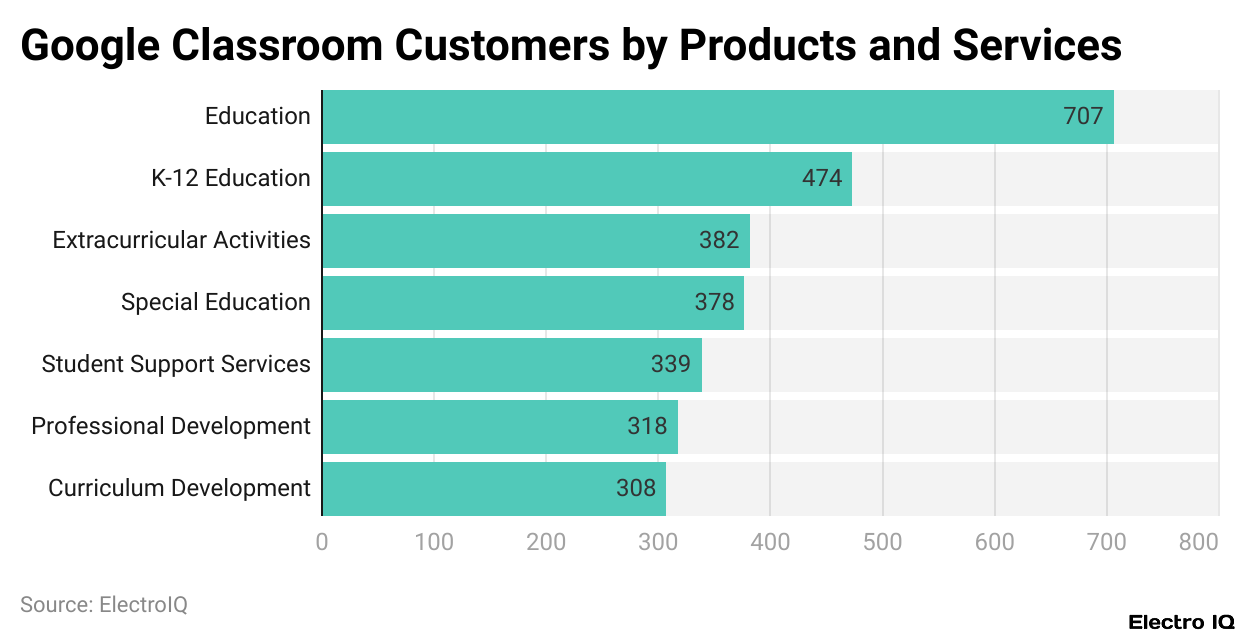
(Reference: 6sense.com)
- The data presents how Google Classroom statistics can be adopted in various segments of the education domain.
- The largest group of customers falls under this generic category of “Education”, with 707 organisations using the platform. This broad category would probably include a combination of schools, colleges, training centres, and educational non-profits.
- Some of the K-12 schools consist of at least 474 organisations using Google Classroom, indicating its strong use in elementary and secondary education.
- In clubs, arts, and other non-academic pursuits in extracurricular activities, 382 organisations use Google Classroom.
- In special education, 378 organisations use the platform for customised learning experiences for students with disabilities or special needs.
- The platform’s flexibility and accessibility features surely contribute towards this cause. 339 customers belong to student sports services, wherein the platform might be in use for organising team communications, scheduling, and training plans.
- In professional development, 318 organisations train educators and staff using Google Classroom, indicating its use for continuing education and teacher training.
- An additional 308 organisations are concerned with curriculum development via Google Classroom.
Google Classroom Customers By Geography
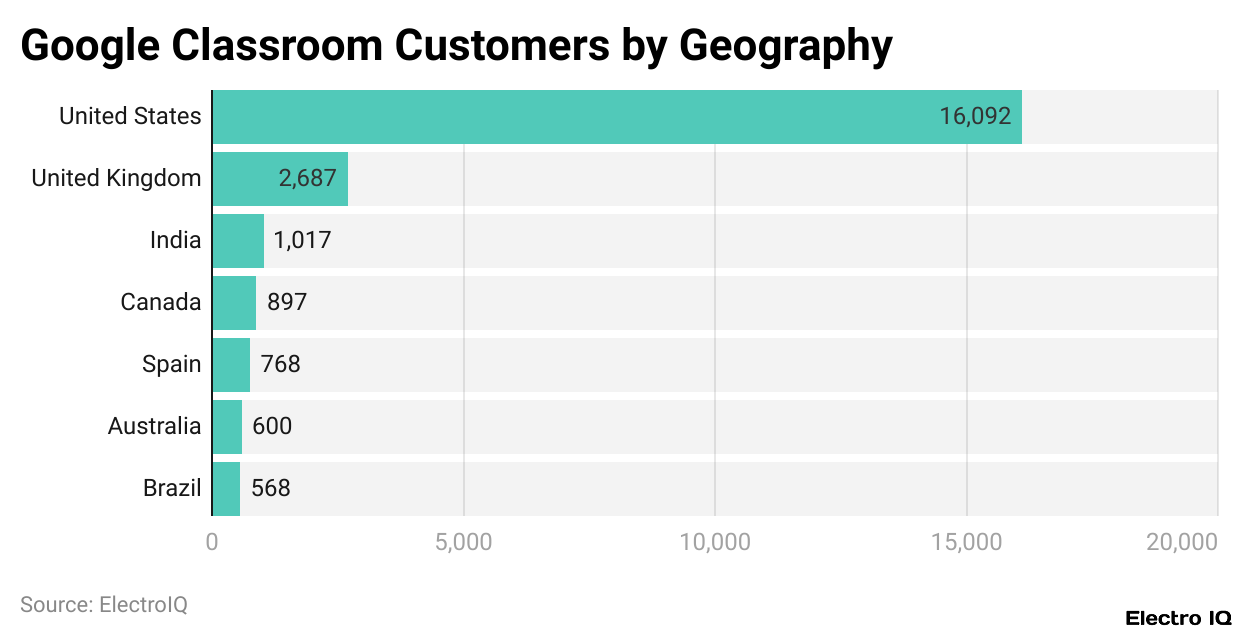
(Reference: 6sense.com)
- The geographic customer distribution of Google Classroom in 2024 has shown very strong concentrations in English-speaking and education-technology-friendly countries. The United States leads with a wide margin, with 16,092 organizations using the platform.
- This dominance reflects integration at the deepest level of Google Workspace for Education in U.S. schools and the widespread adoption of Chromebooks therein.
- The United Kingdom comes second with 2,687 customers, followed by India with 1,017. Though small in terms of numbers, India’s presence is significant considering how big its education sector is and indicates greater adoption in urban and electronically advanced areas.
- Canada counts 897 organisations on Google Classroom, broadly in tune with Canada’s digital infrastructure and inclination for user-friendly, cloud-based education platforms.
- Spain has 768 users, implying moderate uptake in Europe beyond the English-speaking nations. Australia accounts for about 600 organisations that use this platform.
- Lower in number, however, this is likely supported by Australia’s strong digital education policies.
- Following Brazil, about 568 customers represent a developing market for Google Classroom, possibly constrained by infrastructural and language barriers, but showing a steady increase.
Leading Educational App Download On The Apple App Store

(Reference: statista.com)
- Duolingo was the most downloaded education app worldwide from the Apple App Store in 2024, boasting around 50 million downloads.
- This speaks to its worldwide appeal and the increasing ray of interest in language learning via mobile devices.
- GoodNotes 6 is a digital note-taking app for students and professionals, yet it is ranked third with about 16.07 million downloads, showing the undying need for productivity and learning tools on mobile devices.
- Meanwhile, Google Classroom stood at approximately 13.75 million downloads in the same time period.
- While placing it after the top three apps around the world, it is not undermining its footprint.
- That said, the figure proved that the platform is ardently used in schools and institutions of higher learning, even though the app market is fighting for the consumers with all kinds of offerings in education and productivity.
Google Classroom Challenges And Criticism
- Despite wide adoption and popularity, Google Classroom faces several hurdles and criticisms affecting user experience and institutional satisfaction.
- Some of these issues arise from technical limitations, while others are related to privacy and functionality.
- Among the main complaints is the UI, most notably when it comes to the gradebook. Gradebook operations have been reported to slow down and sometimes become unresponsive, wasting hours either entering grades or reviewing student performance for teachers with large classes.
- Issues surrounding this matter have been shared on forums such as Reddit, with educators expressing their frustrations at the delays and inability to cope with data-heavy classes.
- The lack of scalability in these core features hinders teacher productivity and occasionally compels them to resort to external tools for tracking grades.
- An even graver matter is privacy in terms of data. Given that Google stores and processes copious amounts of data on student information—including emails, assignments, assessments, feedback, and activity logs—there have been questions as to how this data is used, who has access to it, and how it is secured.
- According to some of the discourse and cited references in Wikipedia, critics argue that Google’s wider business model, based on data analytics, casts a shadow of doubt regarding the security of student data, sheltering from the fact that Classroom itself does not advertise or sell data.
- With the growth of student information and legalities, schools and parents are maintaining a closer scrutiny to ensure it is neither misused nor inadequately secured.
- Educators, too, point out a lack of various features in Google Classroom as compared to more fully-fledged LMSs such as Canvas, Moodle, or Blackboard. In terms of simplicity and ease of use, the schools and institutions rank Google Classroom at the top, but on the other hand, they find it lacking some advanced features such as a detailed analytic tool for tracking student engagement, customisable grading rubrics, and automated reports on student performance.
- These are some very basic features for teachers to gain greater insight into student learning outcomes, and they are also very important for administrators to manage academic programs on a large scale.
- A lack of such features may lead some institutions to employ third-party tools alongside Google Classroom or to adopt a full-fledged platform altogether.
Conclusion
Google Classroom statistics have changed the face of digital education forever by providing the “act” level for global learning and teaching. Being integrated with other Google services and offering new features with each update in Google Classroom has made its way to a handful of institutions.
However, considering the fears of users and incorporating some benefits will be strategic to the long run for Google Classroom.
FAQ.
As of 2024, Google Classroom has been adopted by approximately 29,161 organisations in the world, sharing 9.36% of the overall LMS market. It is the second most popular learning management system after LinkedIn Learning, which holds 10.42% market share.
The United States dominates significantly with 16,092 organisations using Google Classroom. Other important markets include the United Kingdom, with 2,687 organisations; India, with 1,017; Canada, with 897; Spain, with 768; Australia, with 600; and Brazil, with 568, showing strong adoption in both developed and emerging education sectors.
Google Classroom has broad adoption in several segments across: General education: 707 organisations; K-12 schools: 474 organisations; Extracurricular programs: 382 organisations; Special education: 378 organisations; Sports services: 339 organisations; Professional development: 318 organisations; Curriculum development: 308 organisations.
2024 saw the educational apps get a total of 27.98 million downloads on Android and 13.75 million on iOS by Google Classroom. It was, in fact, among the most downloaded educational apps worldwide. But on a comparative scale, it was still limited when compared to the popularity of Duolingo, with 147 million downloads on Android and 50 million on iOS.
Key criticisms include: Slow and unresponsive gradebook for large classes, Limited advanced LMS features such as analytics and performance reporting, Data privacy concerns for students, with ongoing scrutiny about Google’s management of educational data.

Tajammul Pangarkar is the co-founder of a PR firm and the Chief Technology Officer at Prudour Research Firm. With a Bachelor of Engineering in Information Technology from Shivaji University, Tajammul brings over ten years of expertise in digital marketing to his roles. He excels at gathering and analyzing data, producing detailed statistics on various trending topics that help shape industry perspectives. Tajammul's deep-seated experience in mobile technology and industry research often shines through in his insightful analyses. He is keen on decoding tech trends, examining mobile applications, and enhancing general tech awareness. His writings frequently appear in numerous industry-specific magazines and forums, where he shares his knowledge and insights. When he's not immersed in technology, Tajammul enjoys playing table tennis. This hobby provides him with a refreshing break and allows him to engage in something he loves outside of his professional life. Whether he's analyzing data or serving a fast ball, Tajammul demonstrates dedication and passion in every endeavor.

